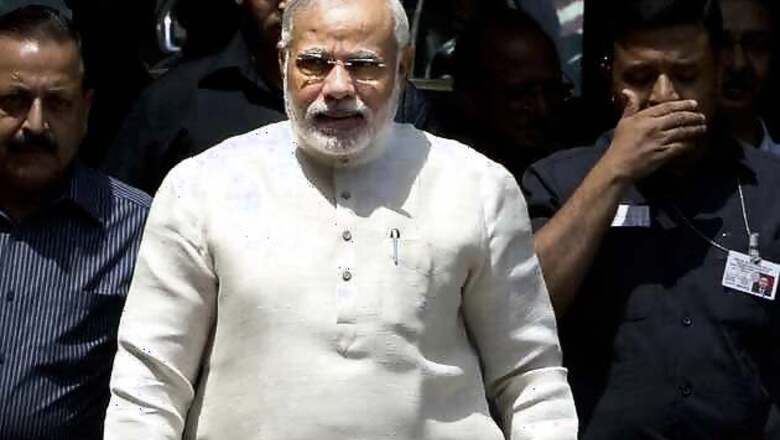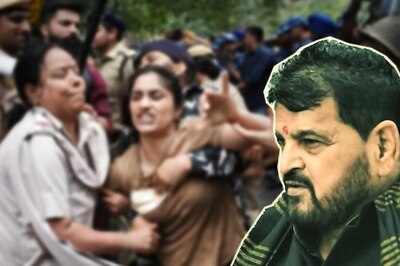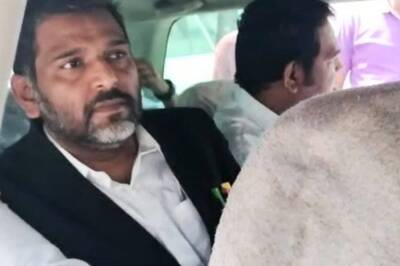
views
New Delhi: Prime Minister Narendra Modi has struck the right chord. In the address to the joint sitting of Parliament on Monday President Pranab Mukherjee spelt out the path that Modi and his government will take over the next 60 months to put India back on the path of progress and in doing so hopefully regain its rightful place in the world.
The stamp of Modi, who powered the Bharatiya Janata Party-led National Democratic Alliance to a massive victory in the Lok Sabha elections, was markedly visible in the 55-minute speech delivered by President Mukherjee wherein he outlined a roadmap that has given the citizens of the country some more reasons to be cheerful of the days ahead. Even as Modi faces a daunting task ahead, he has made all the right noises till now.
With India facing a tough battle on all the economic fronts, it was expected that the President's address would focus of the challenges and the ways to overcome them. To surmount formidable adversaries like inflation, slow growth rate, lack of investor confidence, weakening industrial base and a general policy paralysis which have completely derailed the India growth story in the last few years, the Modi government has come up with an interesting formula.
It is 5Ts, 3Ds, 3Ss. The composition is five Ts - Tradition, Talent, Tourism, Trade and Technology; three Ds - Democracy, Demography and Demand and 3 Ss - Skill, Speed and Scale. With the advantage of a favourable demographic divide, the Modi government is confident of not only pushing India on a trajectory of higher growth but also challenging the new economic superpower China.
Acknowledging the power of youth, the government plans to equip the youngsters with the right kind of tools to take on the world. Education, skill-set and opportunity to reap this demographic dividend will be the top priority and any delay could result in irreparable loss.
While setting up IITs and IIMs in every state is being planned, the government must first ensure massive upgrade and improvement of existing colleges, many of which having simply turned into degree selling shops. Improvement in the quality of faculty along with increase in its quantity is the crying need of the hours. Even our famed IITs face a massive shortage of faculty hampering the proper nurturing of India's best and brightest engineers.
Humongous scams, lack of direction and apathy towards taking bold policy decisions in the previous Congress-led United Progressive Alliance government had dried up investments, pushed food inflation way beyond the acceptable limits and resulted in very low rate of job creation. Now the Modi regime faces the challenge of not only ushering in high growth rate but also containing food inflation.
India is notoriously dependent on the monsoon for a bumper crop. The rains from June to September also replenish the parched water bodies across large parts of the country. But this year it is likely to see deficient rainfall. According to the Meteorological Department, the El Nino weather phenomenon in faraway Pacific Ocean is likely to impact the monsoon resulting in below normal precipitation.
The rainfall could be around 93 per cent, said Science Minister Jitendra Singh. Met officials on Monday pointed out that southwest monsoon current is weak which may result in less rainfall between June and September 2014. Till now the rainfall had been 44 per cent below average.
It is certainly not good news for the new government as normal monsoon is one of the main drivers of Indian economy. Many of the new government's schemes are dependent on adequate rainfall as it gets ready to battle an inflation hovering around the 10 per cent mark for the last couple of years and a growth rate that has fallen below the 5 per cent mark.
In its second bi-monthly monetary policy, 2014-15, announced on June 3, RBI Governor Raghuram G Rajan kept the policy repo rate unchanged at 8.0 per cent. The cash reserve ratio (CRR) of scheduled banks, too, were kept unchanged at 4.0 per cent. Rajan also reiterated the CPI inflation target of 8 per cent by January 2015 and 6 per cent by 2016. The RBI projected real GDP growth of 4.7 per cent in 2013-14 which may rise to 5-6 per cent in 2014-15.
Despite the bleak scenario there are several areas where the government can hit the ground running when Finance Minister Arun Jaitley presents the Union Budget 2014-15 in July. Improving the investment climate, job creation on a massive scale, restoring investor confidence, create predictable, transparent and fair policy environment, making tax regime non-adversarial, making efforts to introduce Goods and Services Tax (GST), pushing reforms to make doing business in India an easy process, allowing Foreign Direct Investment (FDI) in sectors that will create jobs, assets, bolstering infrastructure promoting labour-intensive manufacturing, setting up of world class industrial regions, dedicated freight corridors, industrial corridors, a comprehensive National Energy Policy etc are certainly on the top of the government's agenda as outlined in President Mukherjee's speech.
The National Land Use Policy facilitating scientific identification of non-cultivable land and its strategic development will also go a long way in allaying the fears that infrastructure along with industrial growth and expansion may suffer if land is not readily available. Creating world class infrastructure and cities will boost demand of various items resulting in a positive cascading effect on the economy.
Clearly disowning the appeasement policy of the previous governments, Modi has sent out the message that "poverty has no religion, hunger has no creed, and despair has no geography". His government has made it clear that there won't be schemes for just "poverty alleviation" but to ensure "poverty elimination".
President Mukherjee's speech stated: "The first claim on development belongs to the poor; the government will focus its attention on those who need the basic necessities of life most urgently. It will take necessary steps to provide security in its entirety to all citizens; through empathy, support and empowerment."
After over 25 years of coalition government, some of which were not really weak, the country was looking for a strong and stable regime that could provide effective leadership. With Modi at the helm and the BJP on its own enjoying majority in the Lok Sabha that dream has been fulfilled. Now the time has come for Modi to act on his words and ensure that slogans like "Ek Bharat - Shreshtha Bharat" and "Sabka Saath, Sabka Vikas" are not mere rhetoric.
Modi had promised "Minimum Government, Maximum Governance" during his election campaign and he has already taken a few steps in that direction with the most important being keeping much smaller Union Council of Ministers than his predecessors.
With a massive mandate in the Lok Sabha, pushing through economic reforms Bills related won't be a difficult task for the NDA government. But the problem comes in the Rajya Sabha where the alliance is way short of the half-way mark. Yet in a joint session of Parliament the NDA has the upper hand and aware of this fact many regional parties, who are mostly looking at narrow gains, may not oppose the government sponsored Bills in the Rajya Sabha.



















Comments
0 comment